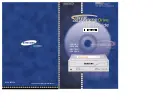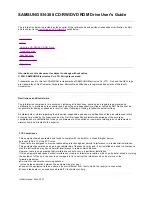
6.
W h e n using C O P Y (with or without the Merge option), if the 'new'
filename already exists on the disc, the message File
already exits
is
displayed and the copy instruction is cancelled. T h e r e is one
exception and that is when the ,O (Overwrite) option is specified, in
which case the message is not displayed and the instruction is carried
out. (See A p p e n d i x 2 E r r o r 9 for message).
7. If the filename you are C O P Y I N G to (with or without ' m e r g e ' ) is
'write p r o t e c t e d ' , the message (filename) is write protected will
a p p e a r and the copy instruction will be cancelled. In this case the ,O
option cannot be used with C O P Y .
E X A M P L E I N S T R U C T I O N S
T h e C O P Y function is extremely versatile and probably the best way of
illustrating its m a n y uses is to give you some examples of instructions:
1.
To copy the file F R E D . E X T on drive 0 to file J O E . 1 2 on drive 1,
and give it a write protected status.
!COPY
" 0 - - F R E D . E X T " T O " 2 - J O E . 1 2 " , P
2.
To copy the file A L E X on drive I to a file of the same n a m e on drive
2 and give it an unprotected write status.
!COPY
" l - A L E X " T O 2,N
N o t e that because there is no change of filename, only a destination
drive is specified, also there are no quotes round the destination
drive.
3.
To copy all files whose names begin with J O B but which have no
extension characters, from drive 0 to drive 1. T h e destination files
have the same write protect status as the source files.
!COPY " O - J O B * " T O 1 RETURN
31
R E T U R N
RETURN
















































